What if your customers weren’t buying your product simply because of the features and functions? What if they were hiring your product to do a job for them instead?
Guess what? They are.
At least, that’s the entire concept behind the Jobs to be Done (JTBD) framework. The idea is that people realize they have a specific pain point that must be solved. When they buy your product, they are essentially “hiring” your product to solve that specific pain point. This is true whether it’s a simple consumer product bought at a big-box retailer – or a complex enterprise software platform. Last month, I wrote a bit about Jobs to be Done as a part of a larger essay about learning from customers. The feedback from that essay was great – with people wanting to dig in even more on JTBD, in particular, so I thought it’d be worthwhile to elaborate more here.
I’ve had the chance to personally learn about Jobs to be Done through Bob Moesta, CEO of the ReWired Group and an early pioneer of Job to be Done – as he collaborated often with Clayton Christensen. As Moetsa puts it, “People don’t want a quarter-inch drill; they want a quarter-inch hole.” By shifting our focus from the product to the underlying job it’s hired to do, we open up a new realm of insights and opportunities.
But JTBD isn’t just a theoretical concept – it’s a practical framework that can transform how you approach product development and marketing. Through in-depth interviews and careful analysis, JTBD helps you uncover the functional, emotional, and social dimensions that drive people to seek a solution. It reveals the struggling moments, the progress-making forces, and the obstacles that shape their decision-making process.
In essence, JTBD is about understanding the story behind the purchase. It’s a framework for empathy, a tool for uncovering deep insights beyond surface-level needs and desires. When applied correctly, it can lead to products that not only satisfy customers but truly delight them.
Why is it valuable for Product Managers?

For Product Managers, Jobs to be Done is more than just another tool in the toolkit – it’s a fundamental shift in mindset. Embracing JTBD helps you see your product through a whole new lens.
Instead of getting caught up in feature wars and chasing the competition, thinking in the mindset of JTBD can help you focus on deeply understanding your customers’ struggles and aspirations. You’ll uncover hidden opportunities to create value, differentiate your offering, and build lasting customer loyalty.
But the benefits of JTBD go beyond just building better products. It can also help you align your team around a shared understanding of customer needs, prioritize your roadmap based on real customer insights, and craft marketing messages that truly resonate. When everyone from product to sales to customer success is oriented around the customer’s job to be done, magic happens.
Perhaps most importantly, JTBD helps you avoid building products nobody wants. By grounding your product decisions in a deep understanding of customer jobs, you’ll be able to create solutions that people not only need but desperately want. You’ll minimize the risk of investing time and resources into features that fall flat and instead focus on creating real, measurable value for your customers.
Key Concepts of Jobs to be Done
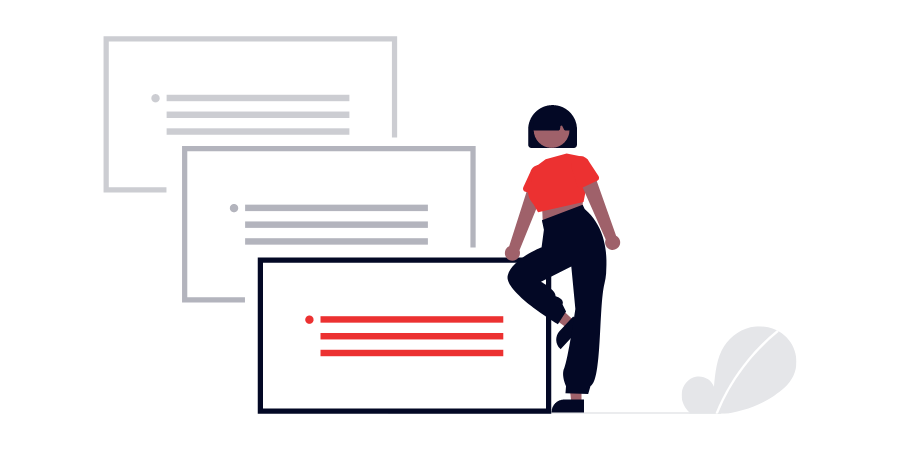
At the heart of Jobs to be Done is a simple but profound insight: people don’t buy products; they hire them to get a job done. This means that when someone purchases your product, they’re not just acquiring a set of features or capabilities – they’re seeking to make progress in their lives.
Consider the classic “milkshake” example from Clayton Christensen. In his research, Christensen found that people didn’t just buy milkshakes from a particular fast-food restaurant because they liked the taste or the price. Instead, they were “hiring” milkshakes to do a specific job: staving off boredom during a long morning commute and keeping them full until lunchtime.
This insight completely reframed how the restaurant thought about how to market milkshakes and other items. Instead of competing with other milkshakes or snacks, they realized they were competing with anything that could solve the same job – from bagels to bananas… and boredom-busting activities like listening to the radio. The Jobs to be Done framework encourages us to see products not as ends but as a means to an end. In other words, customers don’t want your product – they want the progress it enables them to make.
Take Basecamp, the popular project management software from the team at 37 Signals. When the Basecamp team started doing Jobs to be Done interviews, they discovered that their customers weren’t just hiring Basecamp to manage projects – they were hiring it to reduce communication chaos, create a sense of accountability, and ultimately achieve a feeling of control and calm in their work lives. This insight led Basecamp to reframe how they thought about their product. Instead of focusing on project management features, they started designing to create a sense of calm and control. This led to features like the “Work Can Wait” filter, which allows users to pause notifications during off-hours and protect their personal time. It also likely inspired the “screener” feature in Hey, the newer email platform 37 Signals launched just a few years ago.
By seeing their product as a means to an end rather than an end in itself, Basecamp created a more compelling and differentiated offering that spoke directly to their customers’ deeper needs and aspirations.
Struggling Moments
One of the key concepts in Jobs to be Done is the idea of struggling moments. These are the moments when customers realize that their current solution is no longer working and need to find a better way. (Remember those late-night TV infomercials – the ones that always end with somebody saying, “There’s got to be a better way!” That’s a struggling moment personified).
Struggling moments are crucial because they trigger the search for a new solution. They create a sense of urgency and motivation that propels the customer forward in their journey. And they provide a wealth of insights into the customer’s context, constraints, and criteria for success.
Bob Moesta explains, “The moment you realize you have to do something different, that’s the struggling moment. And that’s where we find innovation.”
So, how do you identify struggling moments? The key is to look for the gaps between the customer’s current reality and their desired outcome.
This means conducting in-depth interviews with customers who have recently purchased your product or a competitor’s. By asking them to walk you through their decision-making process, step by step, you can uncover the specific moments when they realized their old solution wasn’t working and they needed to find a new one.
For example, one common struggling moment that we’ve identified in Product Managers, which ultimately led them to attend INDUSTRY: The Product Conference, is the internal questioning of whether or not they’re actually doing their jobs well. The lack of traditional product management education often leaves many product people asking the question, “Am I doing this right?” This underlying uncertainty ultimately leads Product Managers to look for a better way.
In any Jobs to be Done story, forces shape the customer’s decision-making process. One of these forces is the “push” of the current situation—the negative aspects of the customer’s current reality that drive them to seek out a new solution.
For example, in the case of that confused Product Manager, the push might be the feeling of anxiety and uncertainty that they feel when they’re making decisions at work—decisions that they feel they may not have been adequately trained to make. This anxiety and uncertainty “push” them to find a better way.
On the flip side of the push is the “pull” of the new solution – the positive aspects of the new product or service that attract customers and make them believe it can solve their problem. In the example of a Product Manager, they may have heard from a colleague or friend that attending INDUSTRY: The Product Conference helped them realize that they weren’t alone in their feelings and, as a result, began to feel more and more confident about their work. Hearing the rumblings about something that can help solve their problem is the “pull.”
Of course, even if a new solution is attractive, it can also create anxiety for the customer. They may worry about the cost, the complexity, or the risk of making a change. This anxiety is a natural part of the decision-making process, which product teams must be aware of and address in their design and messaging. It could lead to inertia – customers get stuck in their current situation, even if it’s not ideal. If you think of it as one big timeline – starting with the current situation and leading to the push, pull, and new solution – anxiety and inertia can keep pushing people back to the current situation (and away from your product). This slide back to the current situation (albeit not ideal) happens often for various reasons, including a matter of familiarity, sunk costs, or simply the effort required to make a change. And it’s a powerful force that can keep customers from switching, even when a better solution is available.
It’s important to understand these progress-making forces—the push, the pull, the anxiety, and the habits—as they can help product teams better think through solutions that truly resonate with customers and help them overcome obstacles to change.
Jobs to be Done Interviews
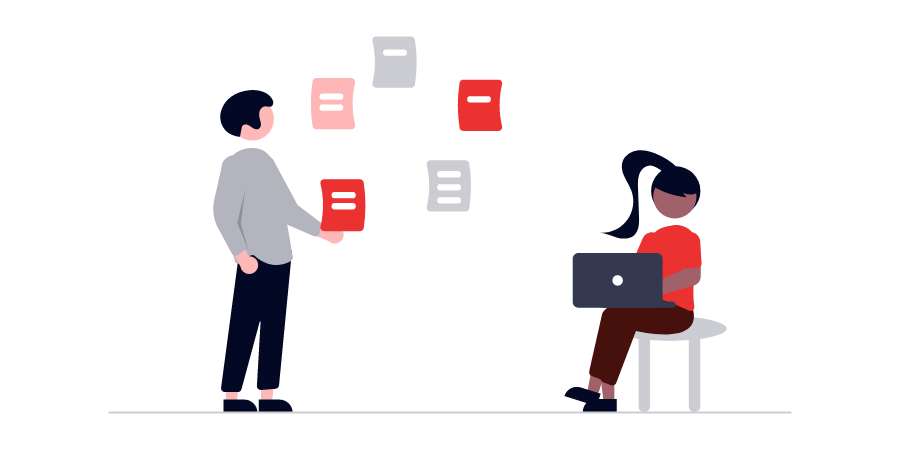
The core of Jobs to be Done is a deep understanding of customer needs, motivations, and decision-making processes. The key to gaining this understanding is through a specific type of interview—the JTBD interview.
The purpose of JTBD interviews is not just to gather feedback on your product or to validate your assumptions. Instead, it’s to uncover the deeper story behind why customers seek a solution, how they evaluate their options, and what ultimately drives them to purchase.
If you’re familiar with user interviews, you might wonder how JTBD interviews differ. After all, aren’t all customer interviews aimed at understanding needs and preferences?
While there is some overlap, there are a few key differences between JTBD interviews and typical user interviews:
- JTBD interviews focus on a purchase decision rather than general feedback or usability issues. The goal is to understand the full context and timeline of the decision-making process, from first thought to final purchase.
- JTBD interviews go deep into the emotional and social aspects of the decision, not just the functional requirements. They probe for the underlying anxieties, aspirations, and influences that shape the customer’s choice.
- JTBD interviews are conducted with customers who have recently made a purchase rather than just any product user. This ensures the insights are grounded in real, recent experiences rather than hypotheticals.
- JTBD interviews follow a specific structure and questioning technique to uncover causality and context. Rather than just asking what the customer likes or dislikes, JTBD interviews seek to understand the chain of events and reasoning that led to the purchase.
So, how do you conduct an effective JTBD interview? There are a few best practices to keep in mind:
Recruiting participants
When recruiting participants for JTBD interviews, it’s important to focus on customers who have recently made a purchase decision in your market. This could be a purchase of your product, a competitor’s product, or even a substitute solution.
Ideally, you should conduct interviews with diverse customers to obtain a range of perspectives. This might include customers of different demographics, use cases, or levels of experience with the product.
Interview length and structure
JTBD interviews typically last 60-90 minutes and follow a specific structure. The interview starts with background questions to understand the customer’s context and previous experiences. Then, it dives into the specific purchase story, probing for details on the timeline, key events, and emotional states. Finally, it wraps up with reflective questions on the customer’s satisfaction with the purchase and any remaining unmet needs. These are indeed long interviews – likely much longer than the typical user interviews you may have conducted. But having the time to go deep with your interviewee is important. As Moesta puts it, you must act as if you’re a documentary filmmaker and need the time to uncover the true story.
Asking probing questions
One key skill in JTBD interviewing is the ability to ask probing questions that uncover deeper insights. This means not just accepting the first answer but digging further to understand the underlying reasoning and emotions.
Some examples of probing questions:
- “Can you tell me more about that?”
- “What was going through your mind at that point?”
- “How did that make you feel?”
- “What alternatives did you consider, and why did you ultimately choose this one?”
Uncovering context and causality
Ultimately, JTBD interviews help to uncover the full context and causality behind the purchase decision. This means understanding what happened, why, and how it fits into the larger story.
To uncover this context, asking follow-up questions and probing for specifics is important. For example:
- “What was happening in your life or work at that time that led you to seek a solution?”
- “Can you walk me through the steps you took to evaluate your options?”
- “What ultimately tipped the scales and convinced you to purchase?”
Once you’ve conducted your JTBD interviews, the next step is to analyze the data to extract insights and patterns. As you review your interview transcripts or notes, look for common themes and patterns across the different customers’ stories. These might include:
- Similar triggering events or struggling moments that led them to seek out a solution
- Common criteria or considerations they used to evaluate their options
- Shared anxieties or hesitations about making a purchase
- Recurring language or phrases they use to describe their needs or desired outcomes
By identifying these patterns, you can better understand the key jobs to be done in your market and the factors that shape the customer’s decision-making process.
Creating job stories or statements is a powerful way to synthesize your JTBD interview insights. These are concise, actionable descriptions of the customer’s key jobs to be done, written from their perspective.
A job story typically follows this format: “When [situation], I want to [motivation], so I can [expected outcome].”
For example, a job story for a project management tool like Basecamp might be: “When I’m managing a complex project with a distributed team, I want to have a centralized hub for communication and task tracking to ensure everyone is aligned and working efficiently.”
By creating these job stories, you can crystallize your understanding of the customer’s needs and motivations and use them as a north star for product development and marketing efforts.
JTBD Interviews + unmet customer needs
JTBD interviews are a goldmine for identifying unmet customer needs and untapped market opportunities. By digging deep into customers’ struggles, anxieties, and desired outcomes, product teams can uncover market gaps ripe for innovation.
For example, when the team at Intercom started doing JTBD interviews, they discovered a key unmet need among their customers: the ability to provide fast, personalized customer support at scale. While plenty of help desk and live chat tools were on the market, none fully satisfied the job of making customers feel truly valued and understood.
This insight led Intercom to develop a new product called Respond, which combined automated messaging with human support to provide a more seamless and personalized customer experience. Intercom created a breakthrough solution that sets them apart in the market by focusing on the unmet job to be done rather than just incremental improvements to existing features.
Applying Jobs to be Done as a Product Manager
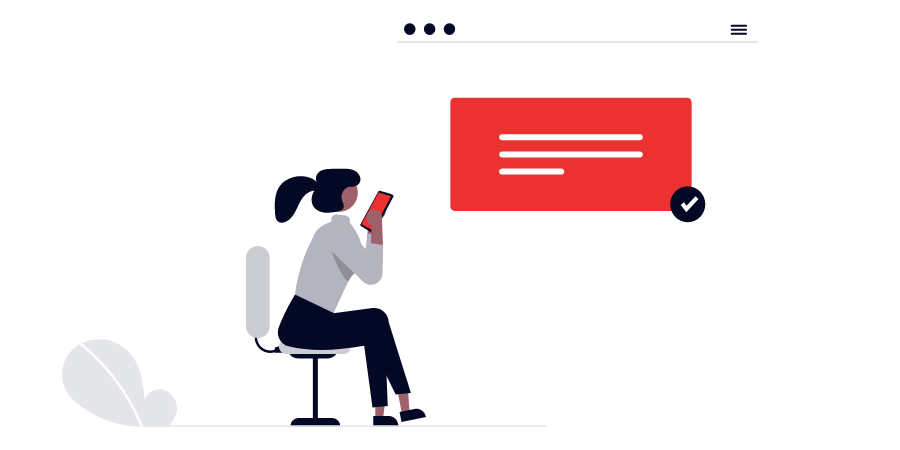
One of the most transformative aspects of Jobs to be Done is how it shifts the focus of product management from features to “jobs.” Instead of getting caught up in the latest trends or trying to match competitors feature-for-feature, JTBD encourages product teams to step back and ask: “What job is our product hired to do?”
By focusing on the underlying jobs rather than just the surface-level features, product managers can create more meaningful and valuable solutions for customers. They can avoid adding unnecessary complexity or chasing the wrong metrics instead of focusing on delivering real progress and outcomes.
Another key benefit of JTBD is how it helps product managers uncover their true competition. Often, the most significant competition for a product isn’t another similar product but rather the status quo or alternative solutions that customers use to get the job done.
Ask yourself this question: What would be its competition if a brand new mobile game launched today? You might immediately conclude that other mobile games in the market may be its true competition… and that may be true. But it may not be true. To know for sure, you’d need to explore why people play this new game. If the primary reason is to provide a few minutes of distraction during a subway commute, then it may compete more with Titkok and Instagram than Call of Duty.
Perhaps one of the most powerful applications of JTBD is in shaping product roadmaps and strategies. By anchoring your roadmap around the key jobs your customers are trying to get done, you can ensure that every feature and initiative is aligned with their needs and delivering real value.
This means going beyond surface-level requests and digging deeper to understand the underlying progress customers are trying to make. It means prioritizing features and capabilities that directly address customers’ struggling moments and desired outcomes rather than just adding bells and whistles.
For example, when the team at 37 Signals was planning the roadmap for their new email client, Hey, they didn’t just focus on typical email features like search and filtering. Instead, they anchored the roadmap around the key jobs customers were hiring an email client to do – like achieving inbox zero, quickly triaging important messages, and protecting their privacy and attention.
By aligning the roadmap with these jobs to be done, 37 Signals created an email client that truly stood out in a crowded market and delivered on customers’ deepest needs and desires.
Getting Started with Jobs to be Done
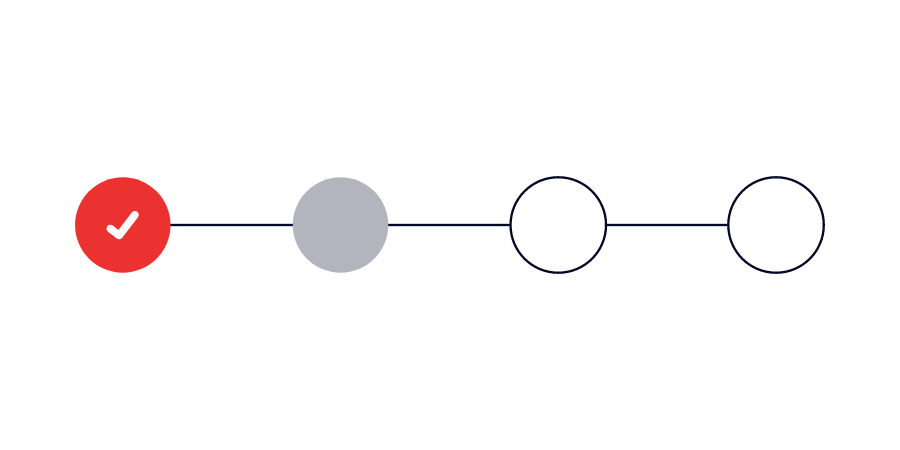
If you’re new to Jobs to be Done, getting started can feel daunting. After all, JTBD is a different way of thinking about product development, requiring a significant shift in mindset and approach. One of the biggest hurdles is simply the fear of doing it wrong. With so many different frameworks and methodologies, it’s easy to get paralyzed by the desire to follow the “right” process or use the “right” techniques.
But JTBD is not a rigid formula but a set of principles and practices that can be adapted to your specific context. The most important thing is to start somewhere, even if it feels imperfect or incomplete. As Moesta has encouraged us at Product Collective, don’t worry about perfecting it. Just start talking to customers and gathering their stories. The insights will come, and you’ll get better with practice.
One way to overcome the initial hurdles and accelerate your learning is to learn from those with deep experience applying the methodology. This could take many forms – from hiring a JTBD consultant to guide your team through the process to attending JTBD workshops and training programs to joining JTBD communities and learning from peers.
For example, when the team at Intercom first started exploring JTBD, they brought in Bob Moesta to run a workshop and conduct interviews with their customers. This experience was transformative for the team and helped them uncover insights and opportunities they had never considered.
But experimenting with JTBD concepts doesn’t require you to go that far. You can gain value by getting started on your own – or even learning from those with just a bit more experience.
Once you are ready to start applying what you’ve learned and talking with customers, it’s important to start preparing. First, you’ll want to create objectives on what you’re trying to learn and accomplish. When defining your objectives for your first JTBD interview, consider what key assumptions you want to validate or invalidate about your customers’ motivations and challenges. Aim to uncover specific aspects of their decision-making process, such as the triggering events that led them to seek a solution or the alternatives they considered. By setting clear objectives upfront, you’ll be better equipped to structure your interview questions and focus on the insights that matter most for your product development and marketing efforts.
Once you’ve aligned the objectives and recruited participants, it’s time to run your first JTBD interviews. Here are some key steps to follow:
1. Developing an interview guide
Developing an interview guide outlining the key questions and topics you want to cover can help ensure that your interviews are focused and effective.
Your interview guide should follow the JTBD interview structure, starting with background questions, diving into the specific purchase story, and ending with reflective questions. Within each section, include open-ended questions that probe for details and context, such as:
- “Take me back to when you first started looking for a solution like this. What was going on in your work or life at that time?”
- “Can you walk me through the steps you took to evaluate your options and make a decision?”
- “How has your experience been since you started using the product? What has been better than expected, and what has been worse?”
2. Conducting interviews
When conducting JTBD interviews, the key is to create a comfortable and open environment that encourages customers to share their stories and experiences.
This means starting with a warm introduction, explaining the purpose of the interview, and assuring the participant that there are no right or wrong answers. It also means practicing active listening, asking follow-up questions, and digging deeper into interesting or surprising responses.
During the interview, focus on capturing the customer’s story in their own words without injecting your own opinions or assumptions. Use open-ended questions to elicit rich details and context, and avoid leading or yes/no questions that can bias the response.
Ideally, you’ll have someone with you who will take notes of the entire interview. Otherwise, it’s great to record the session as long as the person you’re interviewing is comfortable with it.
3. Synthesizing findings
After conducting your interviews, the final step is synthesizing your findings and extracting actionable insights and opportunities.
This involves reviewing your interview transcripts and notes, looking for patterns and themes, and creating job stories or statements that capture the essence of your customer’s needs and desires.
It also involves sharing your findings with your team and stakeholders. You may be surprised that your interview assessment may contrast with somebody else’s – even though you both were a part of the same session and read the same interview notes. It’s important to talk openly about your findings and any potential discrepancies.
View this entire process – including the synthesis – not as a one-time event but as an ongoing learning and iteration cycle. As you continue to conduct interviews and gather customer stories, your understanding of their jobs to be done will deepen and evolve, leading to even more opportunities for innovation and growth.
Avoiding Common Pitfalls
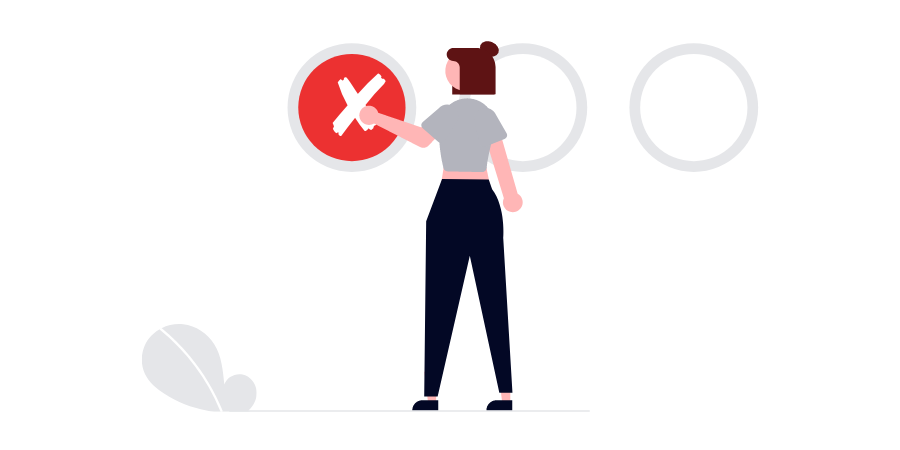
While Jobs to be Done is a powerful methodology for driving customer-centric innovation, it has challenges and pitfalls. One of the most common pitfalls in JTBD is confusing the customer’s job with your own solution. It’s easy to fall into the trap of assuming that your product is the only way to solve the customer’s problem or that your features define the job to be done.
However, the whole point of JTBD is to separate the underlying job from any specific solution. The job is the progress the customer is trying to make, while your product is just one possible way to achieve that progress.
For example, if you’re a Product Manager for a meal delivery service, it might be tempting to define the job as “ordering meals online.” But the job might be “feeding my family healthy meals without the hassle of cooking.” Focusing on the underlying job rather than your specific solution opens up new possibilities for innovation and differentiation.
Another common pitfall is focusing too narrowly on the functional aspects of the job while neglecting the emotional and social dimensions. Customers don’t just hire products to get a task done – they also hire them to feel a certain way or to project a certain identity.
When people buy a luxury car, for example, the real job they’re hiring is likely not just to get from point A to point B. They’re also likely hiring it to feel successful, sophisticated, and admired by others. If you only focus on the functional transportation job, you’ll miss the deeper emotional and social jobs that drive the purchase decision. You can avoid this pitfall by probing for the emotional and social aspects of the job in your interviews. Ask questions like “How did you want to feel when using this product?” or “What did you hope this product would say about you to others?”
Another pitfall is treating JTBD as a one-time event rather than an ongoing process of learning and iteration. It’s easy to think of JTBD interviews as a box to check off – conduct a handful of interviews, synthesize the findings, and then move on to the next thing. However, the reality is that customers’ jobs are always evolving, and your understanding of those jobs will always be incomplete. The most successful companies treat JTBD as a continuous process of discovery and refinement, using every customer interaction as an opportunity to learn and improve.
One last common pitfall is failing to align the entire organization around your uncovered jobs. It’s not enough to conduct interviews and create job stories – you also need to ensure that everyone in the company understands and buys into the jobs framework.
This means communicating the insights from your interviews across functions, from marketing to sales to customer success. It means using job stories to inform product decisions, positioning, messaging, and customer experience. It means ensuring everyone in the company is aligned to help customers progress rather than just pushing features or metrics. Work to make JTBD a shared language and framework across the organization. Conduct training and workshops to help everyone understand the methodology and how to apply it in their work. Use job stories to create alignment and shared purpose across teams. And celebrate the successes and learnings that come from taking a jobs-based approach.
Summing it all up
These days, customer needs and expectations are constantly evolving. Because of that, Jobs to be Done offers a powerful framework for staying ahead of the curve. By shifting your focus from features and benefits to the underlying progress your customers are trying to make, you can create products and experiences that truly resonate.
Embracing this mindset isn’t always easy. It requires a willingness to challenge your assumptions, to listen deeply to your customers, and to let go of your preconceived notions about what your product should be. It requires a spirit of curiosity, experimentation, and continuous learning.
But the rewards can be immense for those willing to make the leap. So, if you’re a Product Manager or Product Leader ready to take your craft to the next level, there’s no better time to start your JTBD journey than now. Start small, but start somewhere. Recruit a few customers, conduct your first interviews, and see what insights emerge. Share your learnings with your team, and start experimenting with new ways of solving customer jobs.
Most importantly, don’t get discouraged if it initially feels awkward or unfamiliar. Like any new skill, mastering JTBD takes practice and persistence. But with every interview, every insight, and every iteration, you’ll be building your muscles for customer-centric innovation. And before long, you’ll start to see the world through a whole new lens – the lens of Jobs to be Done.


